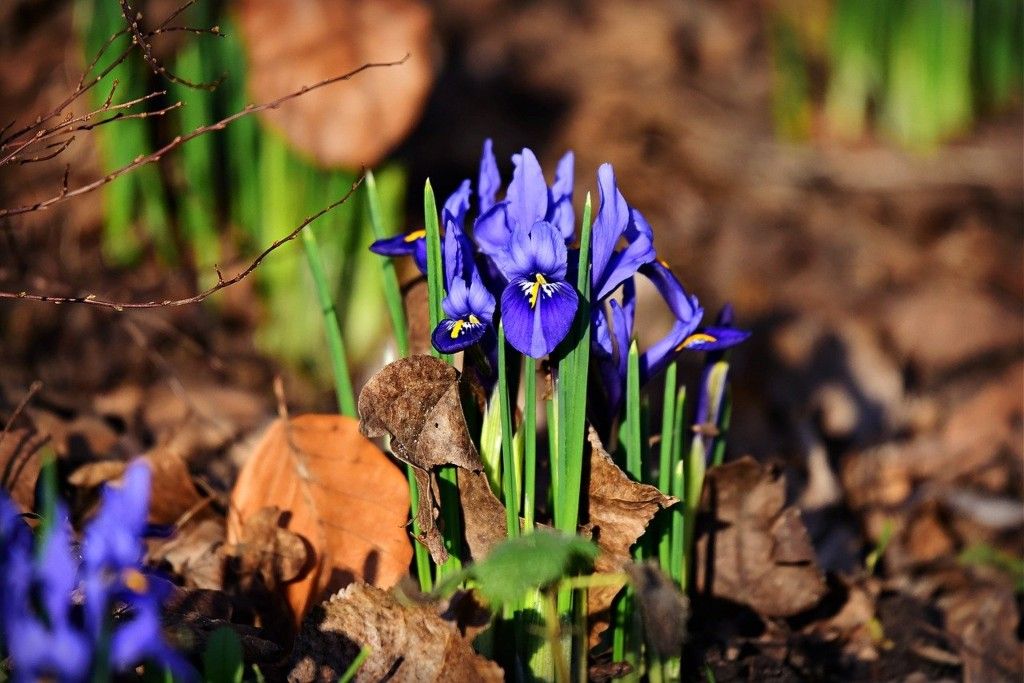The earliest iris to bloom is the petite Iris reticulata.
The reticulated irises have a fibrous network on the bulbs that is similar in pattern to the markings on a giraffe, which is also described as reticulated, “like a net.” These earliest blooming iris have 3- to 6-inch stems and they bloom with the crocus. To display the blooms indoors, I use a tiny bottle for each one.
There are also intricate patterns on the small petals, and their beautiful colors—maroon, purple, lavender, white, and yellow—delight winter-weary eyes.
Plant the little bulbs in drifts in the fall. Since they dislike wet feet, a good spot for them is in a sloping or raised bed so there is good drainage.
Iris is the sacred flower of the Goddess of the Rainbow, and iris means “eye of heaven.” (It is also the name of the center of our eyes.)
After their spring bloom, Iris reticulata bulbs should be given an application of granular fertilizer, sprinkled over them, and their leaves should not be cut down. They are hardy in zones 5 to 9 and are long lived if they are not disturbed. Plant these little bulbs 3 inches deep.
These darling little miniature iris are the start of a progression of flowers of varying types of plants in the family Iridaceae. They are followed late in the spring by the taller Siberian iris.
Try to grow as many different types of iris in your garden so that you can have a progression of these blooms until June each year. The deer leave them alone!










